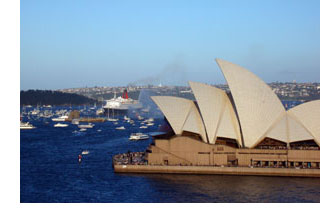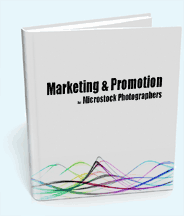 Most stock photographers at one time or another have found themselves taking a photo that no stock agency will accept due to copyright or intellectual property issues. For me it was the, now somewhat well publicised 'Eiffel tower lights'. For those who don't know about this, the lights on the Eiffel tower are a protected design and therefore cannot be used in stock photography.
Most stock photographers at one time or another have found themselves taking a photo that no stock agency will accept due to copyright or intellectual property issues. For me it was the, now somewhat well publicised 'Eiffel tower lights'. For those who don't know about this, the lights on the Eiffel tower are a protected design and therefore cannot be used in stock photography.
Unfortunately the list of protected 'photography subjects' keeps on growing, designers of almost all modern buildings guard their 'intellectual property' by protecting the design of the structure in law.
In general, subjects to avoid while shooting microstock photos are things like:
- Company logos and names
- People's faces (unless you have a model release signed by them)
- Recognisable designs (Rubik's cube etc.)
- Works of art created by someone else
- Unique and recognisable architecture (i.e. the roof line off the Sydney opera house)
- Other photographs taken my someone else
- Sculptures or other public art
You can ask permission from the company or designer/artist, and just like in a model release, have them sign a 'property release'. There are all sorts of complicated exceptions, as I understand most public works of art in the US were commissioned for 'the people' and can be used royalty free stock images. Another general rule is that an image may contain a protected design so long as it is not the subject of the image. So for example a cityscape of New York containing the empire state building is fine, but a photo of the Empire State Building itself is not. Confirm this for yourself, don't quote me on this in court!
To make matters worse, most microstock agencies err on the side of caution, and reject anything which includes street names or even numbers on a product which might be part of an identifiable model or serial number.
Tips:
Many agencies have a list of protected materials on their site. The getty wiki contains a huge collection of data on protected designs, making you feel that there are few buildings left that you can take a photo of!
Despite all the buildings with logos and names on them it's still quite easy to create a cityscape or street scene to sell as microstock. Typically you will end up using the patch, clonestamp or spot healing brush to remove not just identities on buildings, you also need to remove:
- Car registration plates
- Car manufacture logos
- Street name signs (dependant of subject)
- Address numbers from doors or postboxes
- Logos, Company signs and Advertisement Billboards
Good composition of this type of shot also involves picking a location which is not just attractive from a photographic standpoint but also allows the easy removal of protected logos, i.e. making sure that logos do not intersect with other objects making cloning more difficult, or better still compose so that logos are obscured by other subjects in the scene. A well timed passer-by is often useful to hide unwanted subjects if the shutter is long enough to obscure their identity), cars and the people in them can also be obscured with a long exposure, and illuminated signs on distant buildings at dusk can often turn into an 'unidentifiable glow' further simplifying your work.
Image buyers (and microstock newbies) might also be interested in stockphotorights.com a site set up by collaboration between Getty images, Corbis and Shutterstock. Stockphotorights offers detailed information to photo users on licensing, photographers should already know this, and the useful aide-mémoir "models, marks, designs"



It's quiet in here! Add new comment